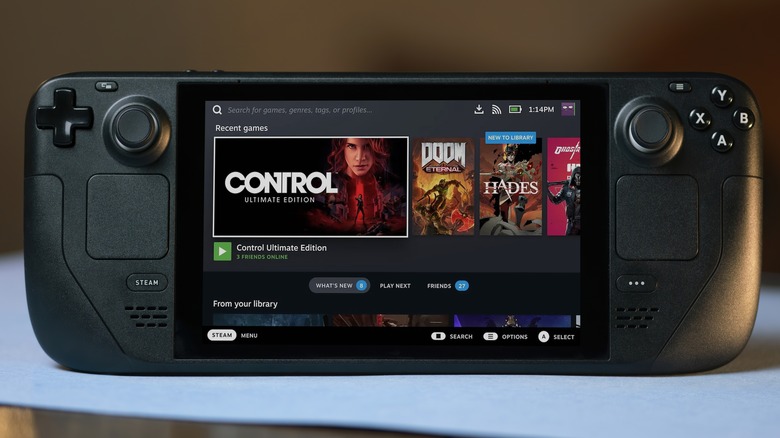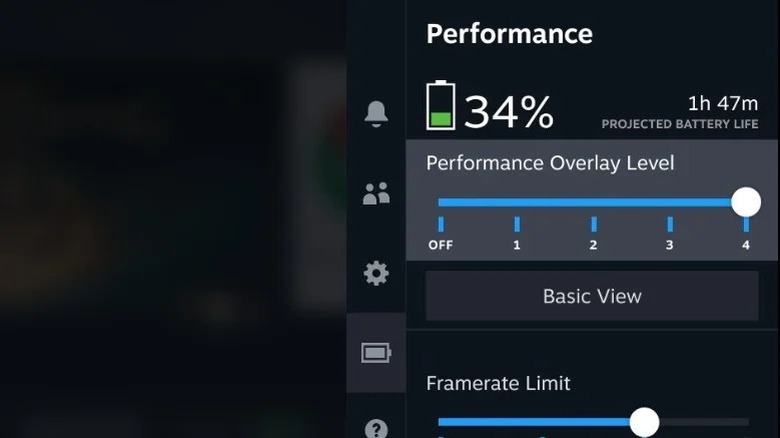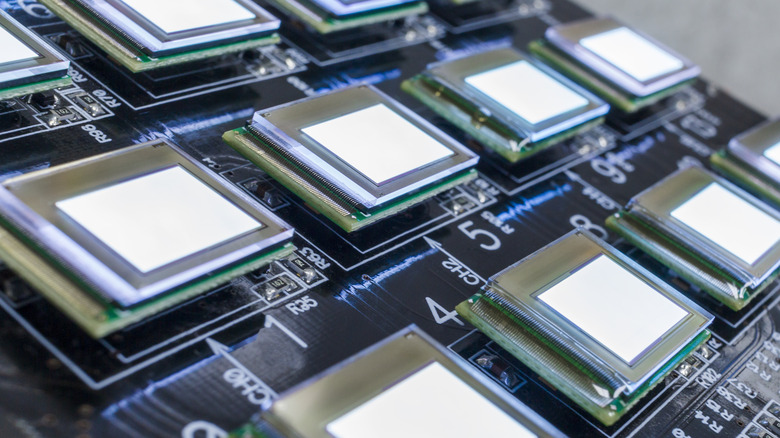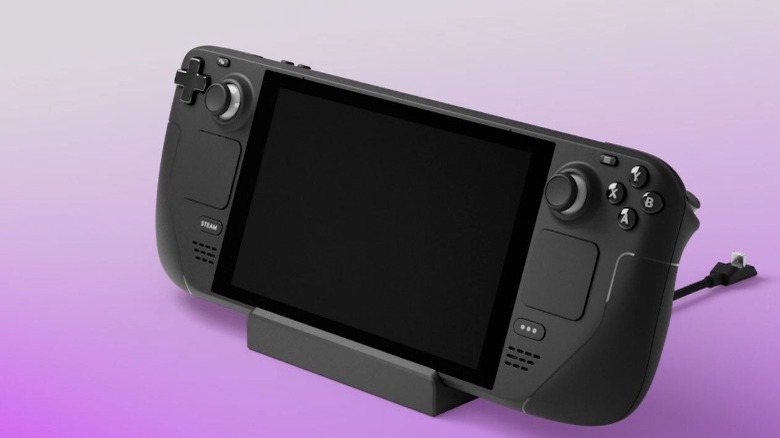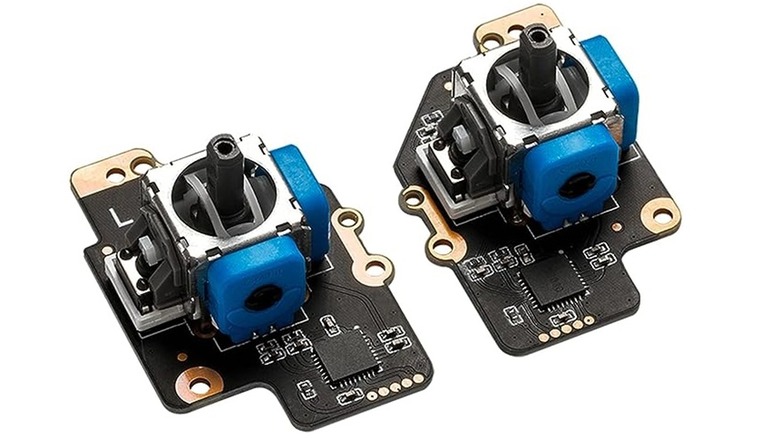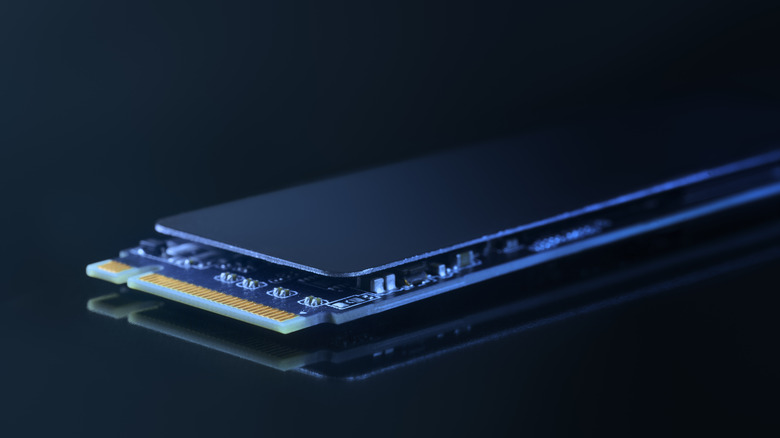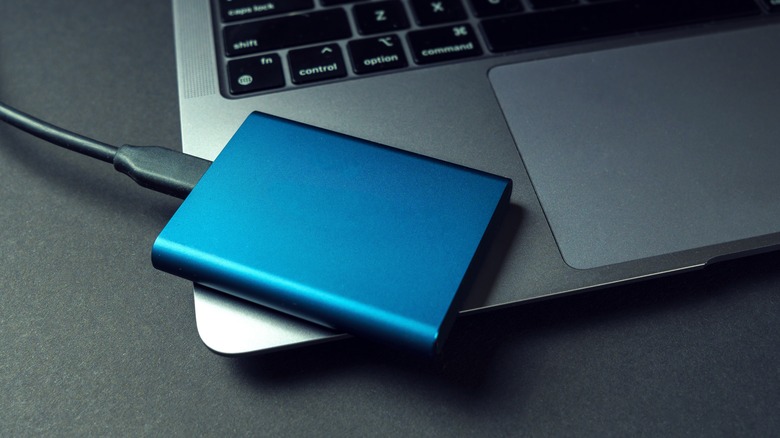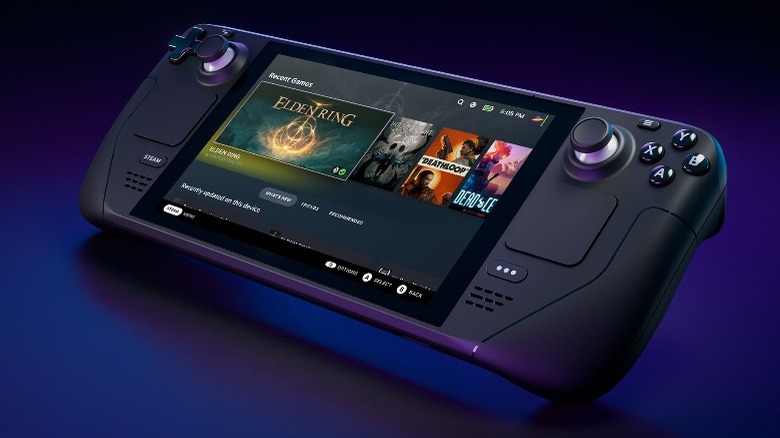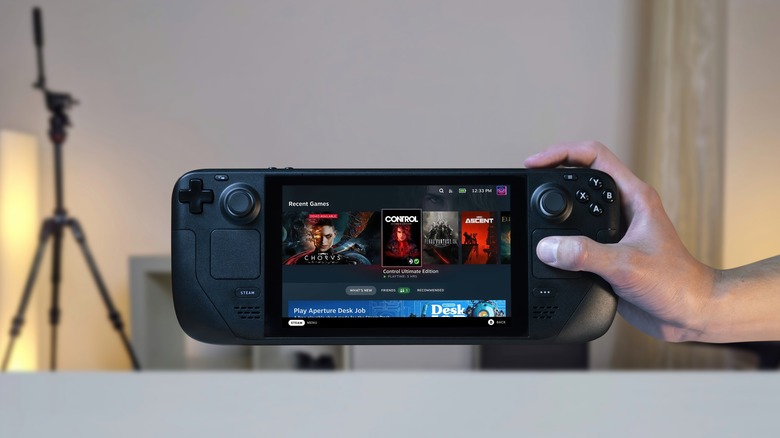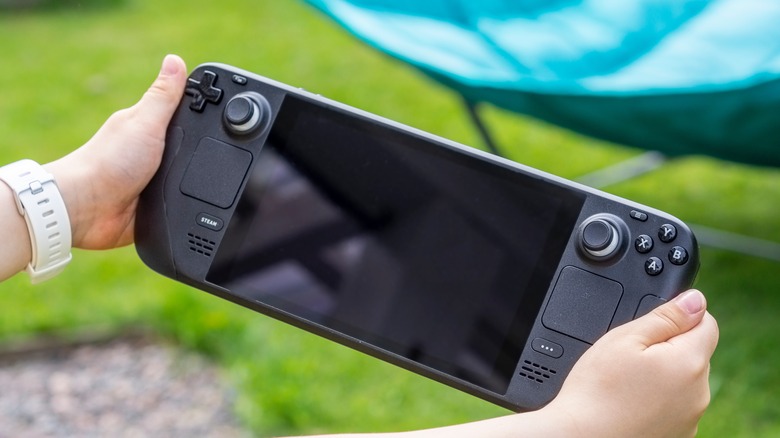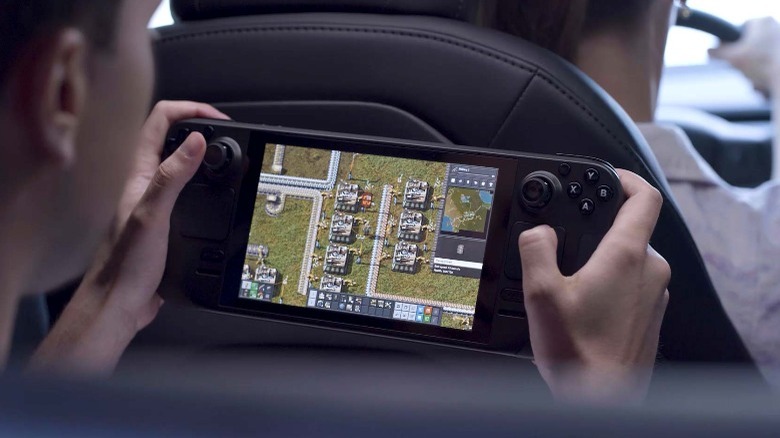10 Features We Want To See In Valve's Next Steam Deck
We may receive a commission on purchases made from links.
There's no denying that the Steam Deck, first launched in 2022, has undoubtedly succeeded compared to Valve's previous hardware efforts. In fact, a significant number of users who own a Steam Deck now use the device as their primary device for gaming. Meanwhile, estimates suggest that as many as three million units could be sold by the end of 2023.
Although it continues to lag behind the Nintendo Switch, it seems clear that Valve has a winner on its hands and there will almost certainly be a new iteration at some point in the future. That not only gives the company the chance to create a more powerful handheld gaming computer but also means Valve can add in some much-needed features. After all, despite getting a lot right, the Steam Deck is far from a perfect product, and plenty of improvements could be made to make it even more appealing to customers.
We've looked at some of the biggest things that the Steam Deck is currently missing that could be added to a new version of the device to make it better than ever.
Longer battery life
Portable handheld devices have made life much more convenient, as they have provided people with the ability to access the internet and carry out all kinds of tasks while on the go. The only major issue with smartphones, tablets, and gaming systems is that their portable nature means that they rely on a battery to provide power rather than an outlet. The Steam Deck is no different in that respect and this has the obvious downside of meaning that the device only has a limited amount of time before it needs to be charged again.
To make matters worse, the Steam Deck is a highly demanding system that requires a lot of power to play games. Officially, Valve states that users can expect the battery to last anywhere from two to eight hours after a full charge. The high fluctuation in battery life is due to the fact that AAA games usually involve a lot more processors than smaller indie titles. Yet, tests have shown that games such as "God of War" drain Steam Deck in less than 90 minutes when run on its highest settings.
While there are some things that users can do to get the most out of their battery, the Steam Deck could still benefit from a larger and more efficient battery. That would make the Steam Deck far more useful as a gaming system that can be used on the move.
An OLED screen
The Steam Deck's screen allows for a maximum resolution of 720p, although the device's internal hardware can output images at far higher resolutions. In fact, when the Steam Deck is docked and connected to a monitor or television, it can play games at 1080p and sometimes even 4K. Considering that the power behind the Steam Deck allows for greater resolutions that it can actually display, many users have expressed an interest in a higher-quality screen. In fact, the device's display has been one of the biggest complaints, especially when most smartphones have a better screen.
It is not just a higher resolution screen that would be a major upgrade. The Steam Deck could also make excellent use of an OLED panel rather than the IPS LCD that it currently has. OLED screens have each pixel individually lit up, providing several advantages compared to traditional LCD. This allows the screen to have a higher contrast, a wider and more vibrant color range, higher refresh rates, and even a wider viewing angle.
When Nintendo introduced an OLED model of the Switch we praised its beautiful visuals and enhanced display. The Steam Deck could equally benefit from the same treatment, with an OLED screen offering several improvements that would make getting the new version a must — perhaps even for those who already own an original Steam Deck.
A dock included with the device
Like the Nintendo Switch, the Steam Deck is not just a portable handheld device. It can also be docked to connect it to a television screen or monitor, allowing users to play games on a much larger display. Similarly, the dock doesn't provide any extra processing power or hardware upgrades but does allow the device to be charged while being used and held securely without the worry of it being damaged by resting on a table or stand. The Steam Deck's dock comes with the added benefit of adding extra USB ports so that more accessories and peripherals can be used.
There is one major difference between the Nintendo Switch and Steam Deck, though — Valve's handheld device doesn't come with a dock included. It is a separate purchase and costs $89, a significant extra burden considering the price of the Steam Deck itself. Fortunately, there are several other quality alternatives available from third-party manufacturers for those who want a cheaper option.
If Valve does produce a second iteration of the Steam Deck, then including a dock with the device should be a priority. After all, similar products usually come with a dock and it is essential to use certain features of the Steam Deck, such as connecting it to a television screen.
Hall Effect joysticks
Since the Steam Deck was designed to be held and used for extended periods, Valve made it as comfortable as possible. It has an ergonomic design with the thumbsticks, buttons, and triggers laid out in a way that should make it easy to use by the vast majority of gamers. This includes thumbsticks with capacitive touch sensors and trackpads to mimic the use of a mouse on a typical computer. The Steam Deck also includes a touch screen and gyro sensors for further control options.
The Steam Deck is already compatible with a wide range of third-party controllers for those who want an improved experience when playing games on the device. However, some people have suggested that it would make sense for Valve to use Hall Effect joysticks. Since these thumbsticks don't rely on physical contact with sensors, they suffer less from wear and tear, making them unlikely to suffer from joystick drift and improving accuracy.
Several Hall Effect third-party mods are available, but having them built into the Steam Deck would eliminate the need to spend extra money on replacing them with offerings from other manufacturers. Another interesting feature that could be implemented in future Steam Deck models is for the thumbsticks to be removable from the device in the same way as the Nintendo Switch Joy-Cons, allowing gamers to play without holding the screen themselves.
Larger internal storage capacity
The Steam Deck comes in three distinct varieties. The cheapest option comes with a 64GB eMMC storage solution, and two more expensive models with NVMe SSDs are available with either 256GB or 512GB of capacity. That's significantly more than systems such as the Nintendo Switch but far behind most other modern gaming PCs and consoles. In fact, the Xbox Series X|S and PS5 each have 1TB and 825GB of storage, respectively. So it is evident that the Steam Deck could benefit from a larger SSD, even if it is just to match with its close competitors.
However, the bigger problem is that even the highest capacity version of the Steam Deck might well prove inadequate for modern games. It is not uncommon for titles from the biggest developers and publishers to be incredibly large. For example, "Call of Duty: Modern Warfare" eventually reached a file size of more than 200 GB after about a years worth of updates, and the recent RPG sensation "Baldur's Gate 3" clocked in at 150 GB.
Anyone who regularly plays those types of games may only be able to install two or three titles before reaching the Steam Deck's SSD size limit. With game sizes only likely to grow in the near future as technology advances and studios push further, a much larger internal storage capacity would be very welcome by most players.
More easily upgradeable storage
Considering that the Steam Deck only has a rather paltry maximum internal SSD size of 512GB, it is only natural that many people would want to expand the storage to suit their needs better. Unfortunately, it isn't recommended that players swap out the built-in SSD, with Valve specifically warning that it could pose a danger to users and the device. That leaves Steam Deck users with just a few options when it comes to expanding the storage of the portable gaming computer.
Those who want some extra space to install even more games are left with the choice of either using a microSD card such as the Samsung Pro Plus or connecting a USB-powered external drive. However, this poses some issues, as external drives will only work when a user mounts them while in desktop mode on the Steam Deck. That makes it impractical to use and more complicated than it should be.
With a possible Steam Deck successor, it would be useful if Valve made it easier to upgrade the storage. Whether this is done by making it easier to connect external drives or by supporting expansion cards like those used on the Xbox Series X|S, it would certainly be something many users would appreciate. Expansion cards typically offer the same speed and performance as SSDs, making them an ideal choice.
Wireless charging
The Steam Deck, like most modern electrical devices, depends on a USB-C connector for charging. This works either by plugging the charging cable that comes with the device directly into the correct port or by connecting it to the docking station, which is then powered by the same cable. The benefit of this is that any USB-C cable can be used to charge the Steam Deck, including those designed for mobile phones and laptops. That's handy because buying a replacement of the 45-watt USB-C PD 3.0 that comes with the Steam Deck can be expensive at $24.99.
While this method of charging works well for the most part, it would be nice to have the option of also powering up the Steam Deck through wireless charging. More and more devices now allow users to provide energy without plugging in any cables, with almost every major smartphone model supporting it. There are also a number of advantages to using wireless technology, including the fact that it involves using fewer cables and is a less messy solution for desks or stands.
Of course, wireless charging should not replace the USB-C method but instead provide customers with more choices over how they are able to charge their device. It would also allow players to leave extra cables at home when they travel with the Steam Deck.
More color options
Unlike many other handheld devices, the Steam Deck is only available in a single color option. Anyone wishing to buy Valve's device has to make do with the standard black case that comes with it, as the company doesn't offer any other varieties. That's in sharp contrast to the likes of Nintendo, which now produces an extended range of Joy-Con colors and shades to give gamers a chance to personalize their console and make it fit better in their home.
Of course, several third-party solutions are available for those who want to customize the Steam Deck with new colors. For example, Jsaux sells a variety of transparent back shells for the device, while eXtremeRate makes full-color shells that cost around $50. A lot of people don't want to rely on third-party solutions, though, especially when they cost so much money and involve carefully removing the original Steam Deck casing.
For those people, more official options would be the perfect solution. Valve initially chose to only produce black Steam Decks to streamline the process and get as many devices manufactured and sold as quickly as possible. Now the system has established itself any new iterations would benefit from multiple color offerings — something Valve has admitted it has previously considered.
Extra connection ports
The Steam Deck was built to work with a wide array of peripherals and accessories. The device comes with a USB-C port and a standard 3.5mm headphone jack. This allows users to plug a variety of products into the Steam Deck such as controllers, microphones, and headsets. It also has built-in Bluetooth 5.0, meaning it can connect to a large number of wireless devices, including Bluetooth keyboards and mice. All of this makes the Steam Deck a fairly easy device to use with third-party accessories.
The only major complaint is that the Steam Deck only comes with a single USB-C port. With users only able to connect a single wired peripheral to the device, it severely limits players who might want to use several accessories at the same time. It also lacks any USB-A ports, cutting it off from older accessories that don't support USB-C. The official dock does remedy this by including three extra USB-A ports, but this is a costly way to expand the number of ports available. It also means the Steam Deck can't be used with USB-A devices without being docked.
A good solution would be for Valve to include extra ports on the Steam Deck itself. There could be several different combinations for USB-C and USB-A ports, but the important consideration is to make it more accessible by including more than a single wired connection for peripherals.
Mobile data support
The Steam Deck comes with a fast dual-band Wi-Fi antenna, allowing it to connect to any Wi-Fi source quickly and easily. That's a good thing because the device utilizes a lot of features that make use of an internet connection. Whether that connection is being used for online multiplayer in games, community features such as chat and voice messaging, or even cloud saves, the Steam Deck requires a good network connection to work at its best. With the push towards streaming and remote play, this is even more important as users can play games without having them installed on the system to save memory over the internet.
The main issue with the Steam Deck in this regard is that it can only access the internet using a Wi-Fi connection. Although this is fine when the device is being played at home or in a building with Wi-Fi that you use, it becomes a problem in public spaces where Wi-Fi may not be readily available. A solution that many people are familiar with is mobile data, which smartphones use to connect to the world wide web when Wi-Fi is not an option. Any potential Steam Deck successor should incorporate the ability to use mobile data with some sort of data plan so that it can connect to the internet without Wi-Fi.
